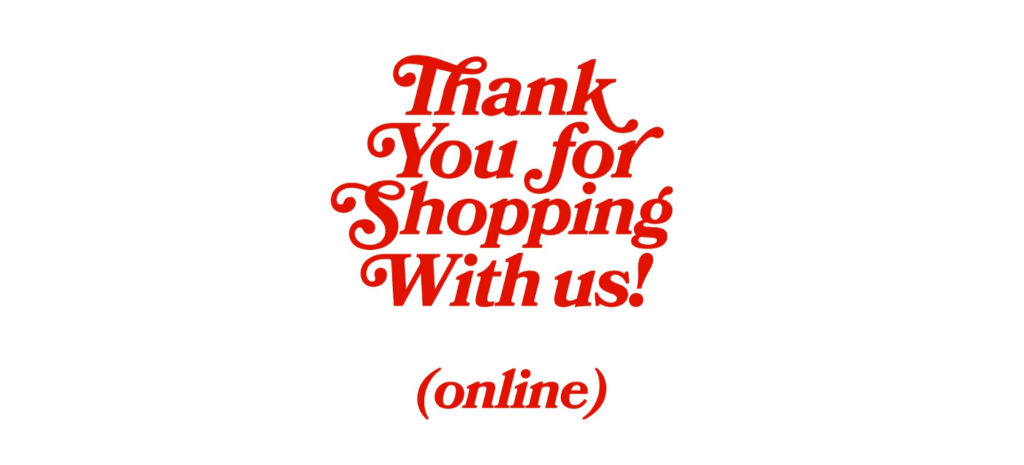
Taking a product to market was never smooth sailing. Now, with the coronavirus pandemic turning our world on its head, marketing leaders must grapple with rapid changes as they attempt to course correct and steer their brands through uncharted waters. In some cases, COVID-19 has accelerated existing trajectories toward digitization, as users spend more time online (+27% increase in daily traffic on Facebook) and people are abandoning traditional forms of entertainment in favor of virtual movie nights on Netflix Party. Most perplexing, however, is that no one knows how long this will last.
How can marketers effectively respond to this environment, continue to connect with their customers, and position brands for a strong recovery? With these questions in mind, it was my pleasure to participate in a discussion with the former Global Vice President of Marketing at Unilever and current Portag3 Ventures Advisor, Sharon MacLeod. Together, we shared insights on the current situation, lessons from the past, and suggestions for how marketers should respond to the crisis at hand. I’ve summarized these in our key takeaways below.
Impacts on Consumer Mindset and Behaviour
In order to adapt your marketing playbook to these volatile times, start by taking a pulse on rapidly-changing consumer attitudes and behaviors.
First and foremost, this crisis is taking a steep toll on pocketbooks. A recent Kantar study showed that roughly 70% of consumers report the COVID-19 pandemic has already or will soon affect their household income. And with many North Americans living paycheck to paycheck and millions added to unemployment rolls in a single week, it’s unsurprising that most people are experiencing extra COVID-induced stress. Only a third of Americans are not worried about their mental health. More than three-quarters of Canadians are stressed about their finances, while searches for “financial help” and related topics have increased by 1100% compared to this same time last year.
However, attitudes vary from country to country, and not everyone shares as gloomy an outlook. We can take heart in the fact that in China, which is further along in the COVID-19 crisis, 65% of people are optimistic that the economy will recover quickly. These encouraging reports should give us optimism about the likelihood of economic upswing on the other side.
As COVID-19 threatens fiscal and physical well-being, consumers and brands are reacting to our new at-home environment. People with money to invest are watching stock prices, staying cautious, and contemplating buying insurance. The health crisis has put a special emphasis on physical fitness and wellness, which consumers are embracing through virtual yoga classes and in-home fitness apps, including Peloton’s 90-day free trial. Instead of visiting a doctor’s office, people and employers are seeking care through telemedicine offerings like Dialogue. And, looking toward the future, many consumers are taking advantage of free online courses from companies like Udemy, aiming to learn a new skill or language online.
As screens become the windows to the outside world, the New York Times reports that consumers are spending more time watching online platforms like Netflix (+16%) and engaging on social media apps like Houseparty (+79%) and TikTok (+15%). Streaming e-sports on Twitch is up (+19%), while viewership of ESPN.com is down (-40%). As people tune in for real-time updates on the crisis, there is renewed faith in television networks and local broadcast stations as sources of credible information.
Understanding these digital consumption trends is crucial for marketers trying to reach their customers. As traditional advertisers like the hospitality industry reduce their ad spend, CPMs (cost per mille, or the cost per thousand views) have decreased by upwards of 25% on channels like Facebook and television. For brands that can stay nimble and lean into these opportunities, now is a great time to invest in acquiring and retaining customers.
Lessons from the Last Recession
When we inevitably bounce back from today’s crisis, we are likely to see a release of pent-up demand. Startups like Groupon, Venmo, and Uber forged their paths during the Great Recession by delivering for customers who were looking for better value — more cheaply and more efficiently. This time around, financial services companies and fintech startups are well-positioned to do just that by learning from the successes and failures of the past.
Anyone who tells you exactly how the next eighteen months will unfold is unlikely to make an accurate prediction. We must learn to live with unpredictability, and the last recession taught us that the instability of an economic downturn forces consumers to think on a shorter timescale. Marketing plans for larger organizations, previously made for one year, were reworked on the scale of months in order to leave room to quickly adapt.
Keep in mind that the psychological impact of this crisis will change consumer behavior even after the pandemic itself ends. Following the recession of 2008, a “psychological recession” continued in Canada for another couple of years, as conservative consumers were cautious to immediately increase spending to pre-recession levels.
When the Great Recession ended, the brands that rebounded strongest were those that maintained positive relationships with their current customers and invested to keep them engaged. As consumers become more cost-conscious, there is an opportunity for nimble brands to rethink how they can provide value and communicate to customers. Some of your competitors may not be able to adapt, and your voice will be heard more clearly. If you are not able to invest in growth, focus on maintaining your current customer base, as it’ll be cheaper than trying to bring them back in the future.
Building Trust and Adding Value
First and foremost, take care of the health and wellness of your employees. Not only is this the right thing to do, but your customers will also notice if you neglect to do so. If you must make layoffs, be sure that your employees learn the news directly from you, and not from Twitter. Exercise care and compassion when making these tough choices. Marriott President and CEO Arne Sorenson’s recent video message is an exceptional example of how to communicate difficult news to employees, shareholders, and customers.
As consumers struggle with the effects of the crisis, find a way that your company can contribute. Almost three-quarters of people want to hear from helpful brands, especially those that can help them personally navigate this crisis. If you can, find a way that your brand is uniquely positioned to help. For example, publications like the New York Times and The Economist are providing free access to coverage of the coronavirus crisis. Other brands are retooling their factories to help, including perfumers like LVMH to produce hand sanitizer and Bauer to manufacture medical face shields. If you cannot uniquely offer value, offer aid. In the hospitality industry, Hilton is providing one million hotel rooms to first responders, while Apple is sourcing and providing millions of face masks.
When communicating with consumers, strike a positive and reassuring tone. While funny videos can lighten the mood among friends, steer clear of humor on brand pages. And above all, make sure you are doing good, not just offering well wishes. Just as we’ve seen a negative reaction to “greenwashing,” real contribution during this crisis will be appreciated, and lip service will be called out.
Next Steps for Marketing Leaders
To respond properly to this crisis, marketing leaders must first re-establish baselines. Conduct an audit of your campaigns and customer communications to ensure they are still timely and appropriate to the current environment. Evaluate your metrics to determine the “new normal” for values like CPAs (cost per action) and customer LTV (lifetime value). Has anything changed that would lead you to make different channel or spend decisions in the near term? Reconnect with your customers by letting them know how your business has been impacted, what you’ll be doing to respond, and, above all, the efforts you’re taking to keep them and your employees safe.
Once you’ve re-established your baselines, refocus on growth. Start by doubling-down on what’s working and expanding efforts on channels and segments that have maintained positive or improved ROI. Get creative and leverage low-cost sources for growth, such as improving funnel conversion, engaging dormant leads, and amplifying customer referrals. Consider how you can lean into newly-created opportunities by refining your consumer value proposition. The value you offered to customers in February may not be the best fit today. If you can, pivot to offer something that will address new pain points directly, and stay close to your customers throughout this time to keep abreast of changes and anticipate their needs.
As consumers look to shore up their finances, companies should take this opportunity to produce relevant content that will help consumers navigate tricky decisions and establish their brand as a trusted source. Fintech company Borrowell recently sent out a survey to their users that instantly returned thousands of responses and requests for financial advice on dealing with the rapidly evolving COVID situation. Now is the time to proactively reach out and guide your customers through these confusing times.
Remember: even if your audience is not ready to buy your product, they will appreciate your help and remember you later. Stay in touch with your customers’ shifting needs and invest now to strengthen trust and focus on delivering tangible value to them. If you play a key role in helping consumers manage this crisis, you’ll be well-positioned to expand into the economic recovery.
Key Insights on Marketing through the COVID Crisis
- Consumer mindsets & behaviors are shifting rapidly.
- People are worried about their finances and embracing “at-home” product solutions.
- Brands such as Peloton are offering free trials to meet these needs.
- The last recession taught us the importance of nimbleness and refined value propositions.
- Take care of your employees and assist in material ways; avoid lip service.
- Marketers should first re-establish baselines before returning to growth.
- Building trust with your customers now will strengthen long-term relationships.
We empower and invest in visionary financial entrepreneurs. Learn more about Portag3 Ventures at p3vc.com.


